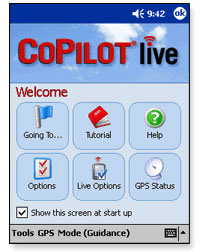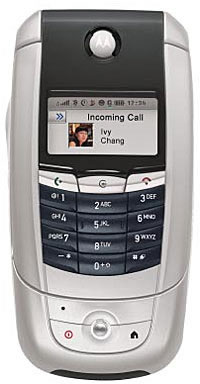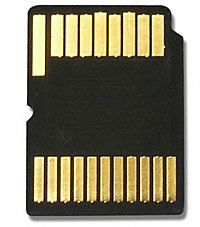 Satellite broadband services should become a lot easier to implement with the adoption of the first broadband satellite standard on both sides of the Atlantic.
Satellite broadband services should become a lot easier to implement with the adoption of the first broadband satellite standard on both sides of the Atlantic.
The transatlantic agreement sees both the US-based Telecommunication Industry Association (TIA) and the European Telecommunications Standards Institute (ETSI) adopting the Internet Protocol over Satellite (IPOS) standard.
Satellite data links are an important alternative to wired links in poorly connected rural areas or for business operations that like to regularly shuffle about to new locations.
IPOS-based equipment and software used to build satellite broadband will now be available from a variety of companies who support the standard, including Hughes Network Systems, Microelectronics Technology, Texas Instruments, TriQuint Semiconductor, Wind River Software, Intelsat and Telefonica.
“Now ratified and approved by the two major standards bodies, IPoS opens the door for greater optimisation and economies of scale throughout the satellite industry,” said Pradman Kaul, chief executive officer of Hughes Network Systems.
“IPoS is the only air interface specifically designed for the efficient delivery of broadband satellite services and offers the best means to expand satellite’s addressable markets worldwide.”
“The IPoS standard is extensively field proven, highly scalable and supports low-cost terminals. Now approved by both governing bodies, widespread adoption of the IPoS will further reduce equipment costs and make broadband available and affordable to many more users worldwide,” said Enrique Salvatierra, director of Satellite and Submarine Cables Department, Telefonica de Espana.
IPoS works by specifying a Satellite Independent Service Access Point, which creates an interface between the satellite-dependent functions and the application layers, thereby enabling an open service delivery platform.
To date, the standard has been implemented in over 500,000 sites worldwide.
 “Intelsat meets the connectivity requirements of some of the largest telecommunications service providers worldwide,” said Frederick Morris, vice president of Intelsat.
“Intelsat meets the connectivity requirements of some of the largest telecommunications service providers worldwide,” said Frederick Morris, vice president of Intelsat.
“These companies frequently turn to us for unbiased assessment of satellite broadband technologies available to their end-customers, and having standards like IPoS makes this process easier. We heartily endorse any effort to spread standardisation throughout the satellite broadband service industry.”
IPOS will be competing against the likes of WiMAX in the fixed broadband wireless market. WiMAX trials have already been started by AT&T at companies in the US and Europe is expected to experience the first WiMAX services from providers next year.
Telecommunications Industry Association
European Telecommunications Standards Institute
 Crown Castle International announced today that it has formed a new subsidiary, Crown Castle Mobile Media, tasked with delivering live mobile television services to handheld devices including cell phones.
Crown Castle International announced today that it has formed a new subsidiary, Crown Castle Mobile Media, tasked with delivering live mobile television services to handheld devices including cell phones. Crown Castle’s support of DVB-H is further evidence that DVB-H is a robust, open standard that will not only bring high- quality television and radio to the market, but will ensure a vibrant marketplace for infrastructure equipment, innovative devices, and compelling services.”
Crown Castle’s support of DVB-H is further evidence that DVB-H is a robust, open standard that will not only bring high- quality television and radio to the market, but will ensure a vibrant marketplace for infrastructure equipment, innovative devices, and compelling services.” The Comcast deal means that TiVo will have to adapt its software to work on Comcast’s existing DVR platform. This will enable TiVo to blast out the advertising it sells as interactive video clips in their onscreen menu to Comcast subscribers.
The Comcast deal means that TiVo will have to adapt its software to work on Comcast’s existing DVR platform. This will enable TiVo to blast out the advertising it sells as interactive video clips in their onscreen menu to Comcast subscribers. Motorola is to bundle GPS navigation software and hardware with the European versions of its A780 and MPx220 smart phones.
Motorola is to bundle GPS navigation software and hardware with the European versions of its A780 and MPx220 smart phones. GPS navigation has proved a bit of a hit in Europe, with sales bolstering up an otherwise declining PDA market.
GPS navigation has proved a bit of a hit in Europe, with sales bolstering up an otherwise declining PDA market. Both handsets use Bluetooth to communicate with a separate GPS receiver.
Both handsets use Bluetooth to communicate with a separate GPS receiver. America Online has announced a consumer VoIP application, Wanadoo joins the party. The AOL offering will go head-to-head with traditional telephone companies, cable firms and a multitude of start-ups competing for the mainstream-bound VoIP market.
America Online has announced a consumer VoIP application, Wanadoo joins the party. The AOL offering will go head-to-head with traditional telephone companies, cable firms and a multitude of start-ups competing for the mainstream-bound VoIP market. The AOL product will also allow customers to turn IM sessions into phone calls when one of the parties enters the phrase “Can I Call?”
The AOL product will also allow customers to turn IM sessions into phone calls when one of the parties enters the phrase “Can I Call?” “The new IMAGEON processors from ATI combine advanced audio and video processing capabilities to turn mobile phones into mobile entertainment centers.”
“The new IMAGEON processors from ATI combine advanced audio and video processing capabilities to turn mobile phones into mobile entertainment centers.” Announced at the CeBIT tradeshow, Pretec have introduced a new memory card format for smartphones, called the C-Flash cards.
Announced at the CeBIT tradeshow, Pretec have introduced a new memory card format for smartphones, called the C-Flash cards. This format will also have support for MU-Card, a specification from China lead by Mu-Card Alliance. C-Flash has been adopted as the next small form factor version of MU-Card (called MU-Flash).
This format will also have support for MU-Card, a specification from China lead by Mu-Card Alliance. C-Flash has been adopted as the next small form factor version of MU-Card (called MU-Flash). C-Flash has also been submitted to the MMC Association to be considered as the next small form factor standard of MMC.
C-Flash has also been submitted to the MMC Association to be considered as the next small form factor standard of MMC. MP3-player supplier Jens of Sweden and Jonas Birgersson (founder of broadband supplier Bredband2) have reported the Anti-Piracy Agency to the Swedish Data Inspection Board (SDI).
MP3-player supplier Jens of Sweden and Jonas Birgersson (founder of broadband supplier Bredband2) have reported the Anti-Piracy Agency to the Swedish Data Inspection Board (SDI). Bredband2 has already received queries from the police based on the agency’s registrations.
Bredband2 has already received queries from the police based on the agency’s registrations. Besides, we think that terrorizing and persecuting the users is the wrong method. Instead, we should popularise and support all the great Swedish companies that develop unique digital services. Stop the witch-hunt and support the legal alternatives.”
Besides, we think that terrorizing and persecuting the users is the wrong method. Instead, we should popularise and support all the great Swedish companies that develop unique digital services. Stop the witch-hunt and support the legal alternatives.” The Swedish police have prosecuted 136 people for illegal file sharing after complaints from the AP-agency, and the agency has vowed to increase the number.
The Swedish police have prosecuted 136 people for illegal file sharing after complaints from the AP-agency, and the agency has vowed to increase the number. Straight out of the Billy Bonkers School of Barking Inventions, Sony Ericsson’s new Bluetooth controlled camera, ROB-1, lets users steer a wheeled camera around using the joystick or keypad on a mobile phone.
Straight out of the Billy Bonkers School of Barking Inventions, Sony Ericsson’s new Bluetooth controlled camera, ROB-1, lets users steer a wheeled camera around using the joystick or keypad on a mobile phone. “This is a great gadget for people who really like testing the latest technology first hand and having fun with new applications. Just like the Sony Ericsson Bluetooth Car which appealed to a wide range of gadget fans, we believe that ROB-1 will become the ‘must have’ Bluetooth gadget to show off to friends and family!!
“This is a great gadget for people who really like testing the latest technology first hand and having fun with new applications. Just like the Sony Ericsson Bluetooth Car which appealed to a wide range of gadget fans, we believe that ROB-1 will become the ‘must have’ Bluetooth gadget to show off to friends and family!!